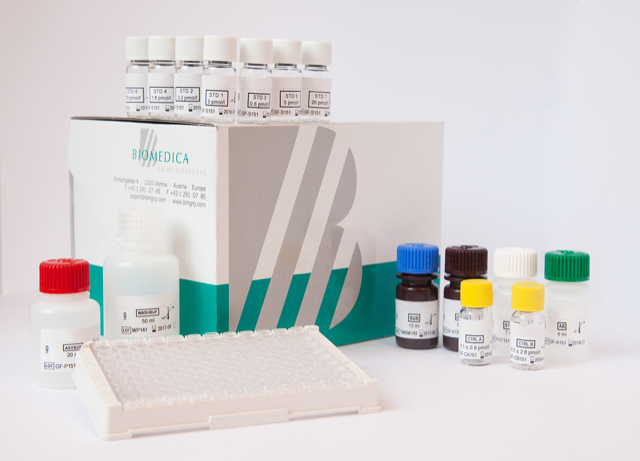EZ4U ELISA Assay Kit
EZ4U ELISA Assay Kit Developed and Manufactured in Austria by Biomedica
Method: Cell proliferation and cytotoxicity assay, 10 x 96 tests, method based on the reduction of tetrazolium salt to colored formazan
Incubation Time: 2 – 5 hours, depending on the metabolic capacity of the cells
Sample Type: Cell culture supernatant
Sample Size: 200 µl / test
Alternative Names: Cell proliferation and cytoxicity assay
For Research Use Only
Assay Overview
The EZ4U assay is a two to five-hour test for the measurement of cell proliferation and cell toxicity. The assay employs non-toxic tetrazolium salts, which are reduced to colored formazan. As this reduction process requires functional mitochondria, which are inactivated within a few minutes after cell death, this method provides an excellent tool for the discrimination between living and dead cells.
Assay Principle
The EZ4U ELISA Assay Kit set-up is performed in the same manner as the standard 3H-thymidine incorporation method. Instead of pulsing with tritiated nucleotide, 20 µl of dye solution is added to 200 µl sample. The incubation time is dependent on the metabolic capacity of the cells. Usually two to five hours of incubation at 37°C are sufficient to yield a significant increase in color intensity. As different cells vary in their ability to convert the yellow colored tetrazolium compound to its red formazan derivative, we recommend testing every new cell-line’s metabolic capacity as described in the figure below.
After incubation, the plate is removed from the incubator and gently mixed by tipping the plate towards all four sides. To avoid increased standard deviations, the plate must be shaken before reading the optical density.
The absorbance is measured on a microplate-reader set at 450 nm or 492 nm with 620 nm as a reference wavelength. The reference absorbance at 620 nm (or any wavelength between 620-690 nm) is used to correct for nonspecific background values caused by cell debris, fingerprints, or other potential interferences. However, the reference may be omitted without significant changes in the accuracy of the assay.


